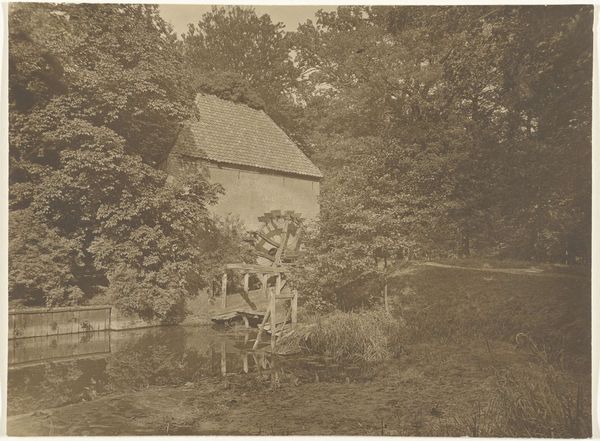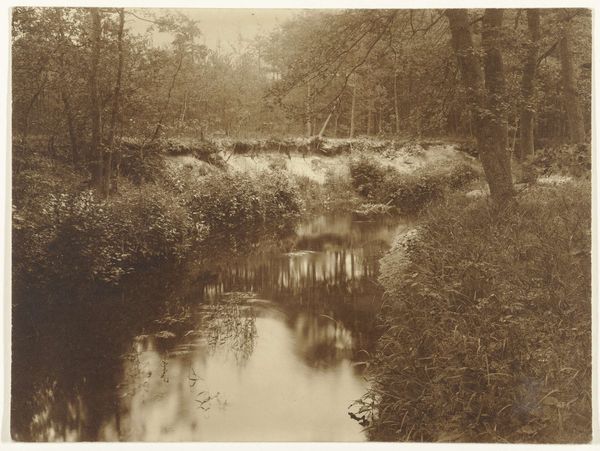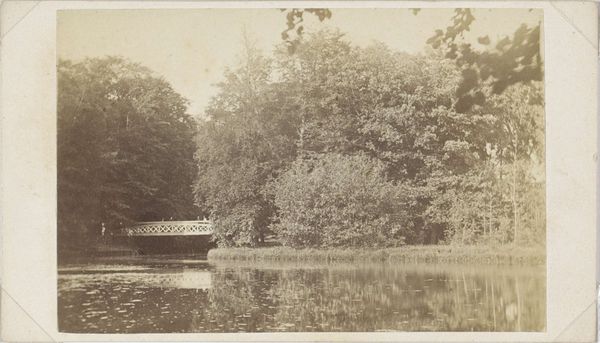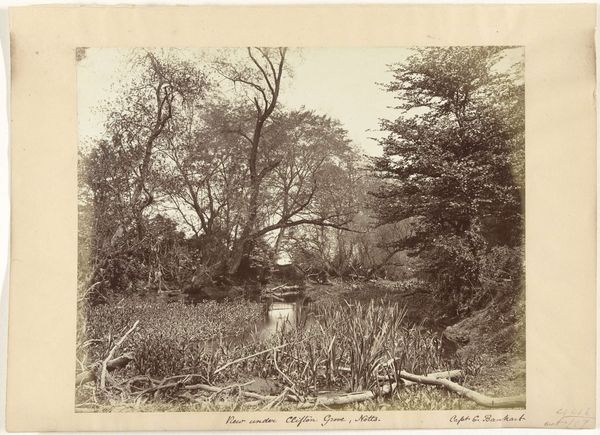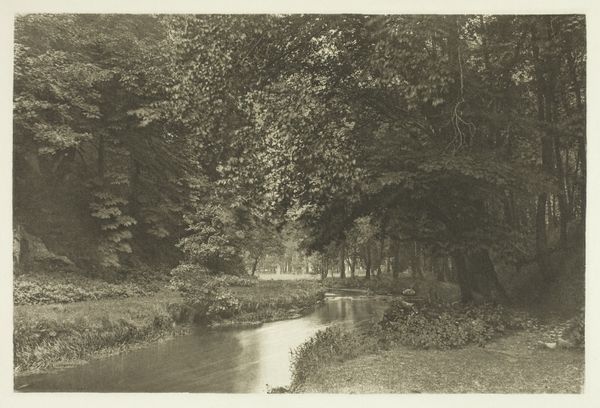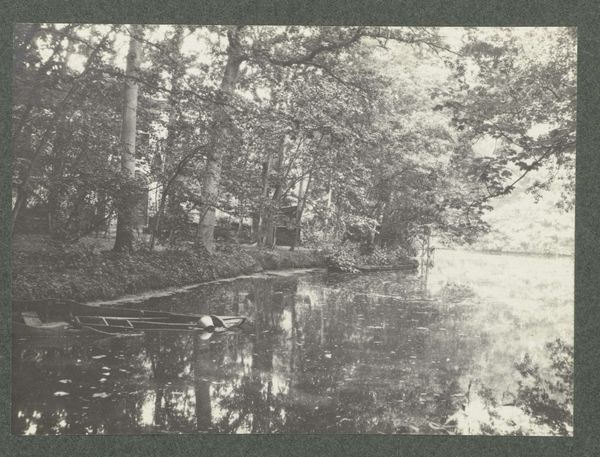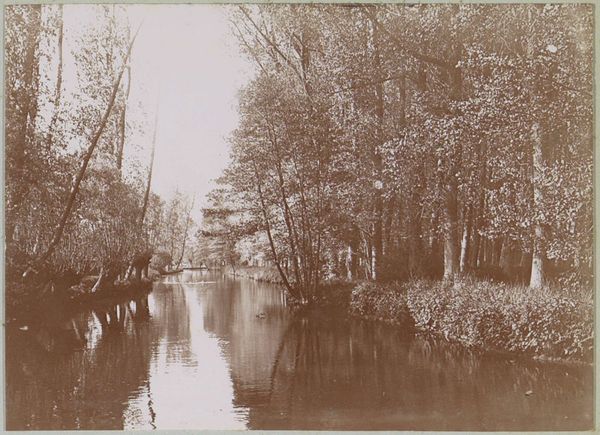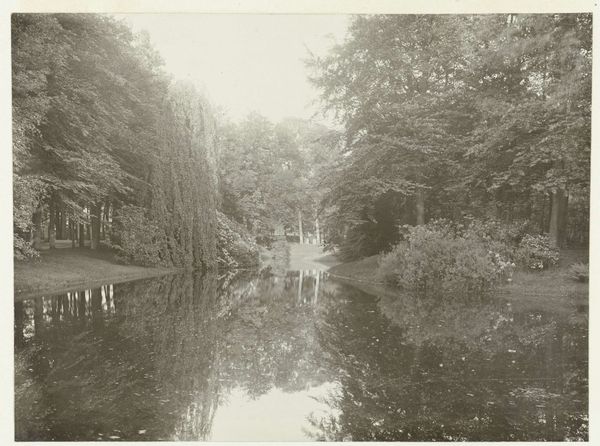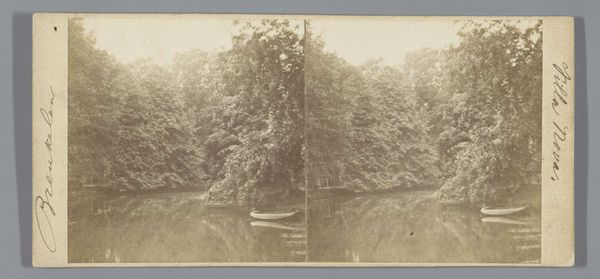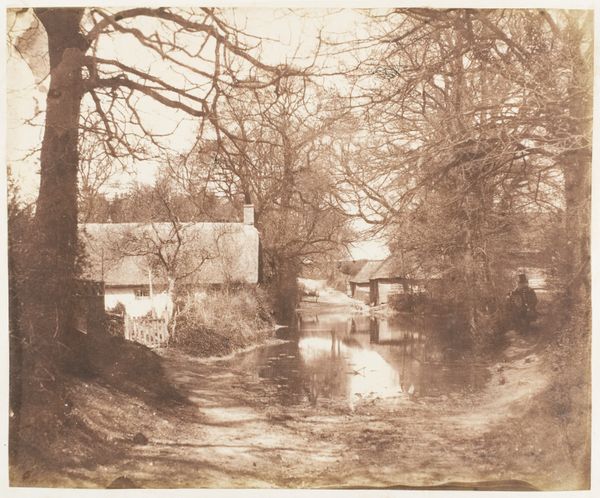
photography
#
still-life-photography
#
pictorialism
#
landscape
#
photography
#
realism
Dimensions: height 167 mm, width 226 mm
Copyright: Rijks Museum: Open Domain
Editor: We're looking at "Man vaart in een punter in Giethoorn" by Richard Tepe, a photograph taken sometime between 1900 and 1930. It's currently housed in the Rijksmuseum. The tonality creates such a peaceful, almost nostalgic, feeling. What can you tell me about the cultural significance of a photograph like this? Curator: This photograph gives us a window into a specific time and a burgeoning interest in representing the Dutch landscape as idyllic. Think about what photography meant at the turn of the century. It offered a relatively new way of capturing and disseminating images. The "picturesque" village became a popular subject. How does the image participate in constructing this ideal? Editor: I see it in the composition – the framing with trees, the calm water, the almost invisible labor… it all seems designed to create a sense of peaceful escape. Curator: Exactly! It's not just a record; it's a constructed image reflecting certain values and desires. Consider how these kinds of images were circulated – postcards, publications – shaping public perception of the Netherlands, both for locals and tourists. How do you think this image would have functioned differently depending on who was looking at it? Editor: For someone local, maybe it reinforced pride in their region. For a tourist, it might solidify the image of the Netherlands as a tranquil escape, almost like a staged movie set. Curator: Precisely. And that constructed image then influenced, and continues to influence, how Giethoorn is perceived and perhaps even how it has developed as a tourist destination. Thinking about photography not just as art, but as a shaper of culture, changes everything. Editor: That’s such a powerful insight. I will never see these images as ‘just photographs’ again. Thanks! Curator: My pleasure. Now you are thinking like a historian.
Comments
No comments
Be the first to comment and join the conversation on the ultimate creative platform.

